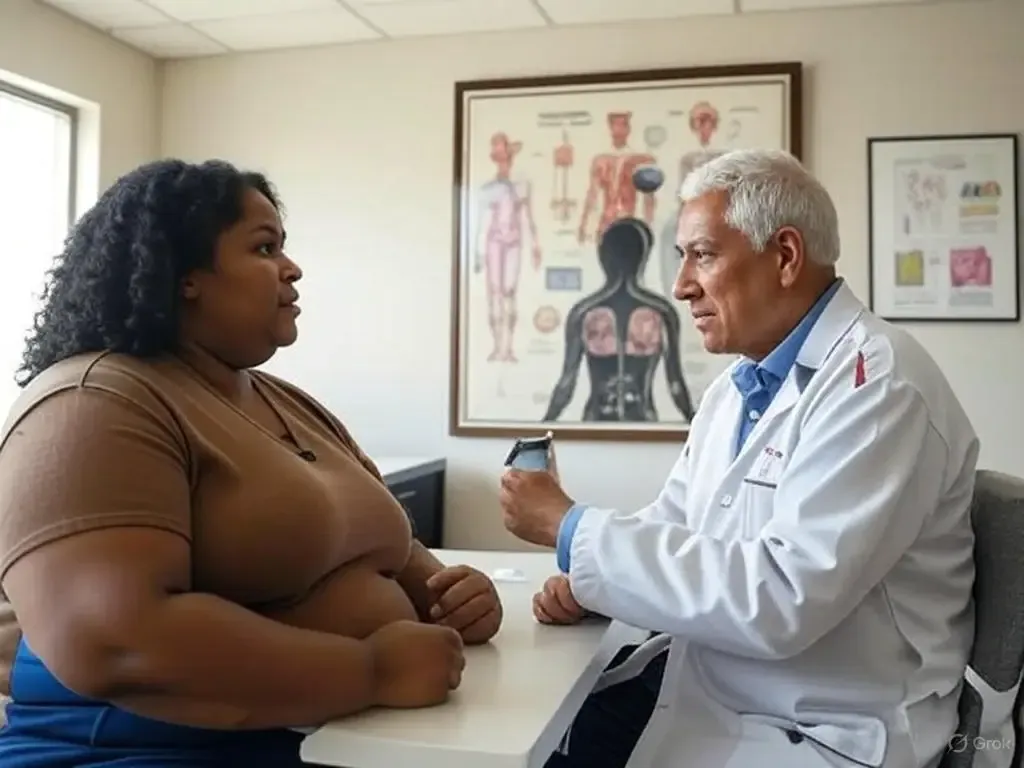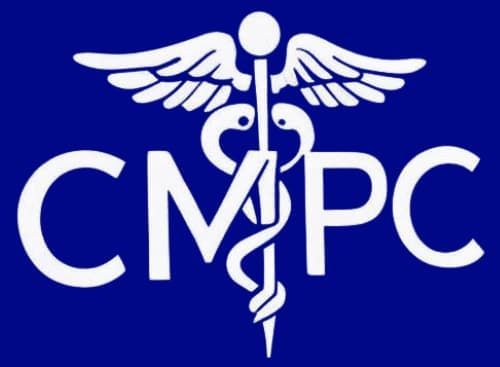
Considering weight loss treatment in the Outaouais region but worried about potential adverse reactions?
This concern is valid and one that many patients express before beginning treatment. At CMPC, understanding how adverse reactions are prevented, identified, and managed is essential to making an informed decision about your weight management journey.
The possibility of an adverse reaction exists with any medical treatment, from simple medications to complex procedures. However, the likelihood, severity, and management options vary significantly between weight loss approaches. Our team is committed to minimizing these risks through careful screening, appropriate treatment selection, and comprehensive monitoring throughout your care.
Understanding Adverse Reactions in Weight Loss Treatments
Before discussing specific treatments, it's helpful to understand the types of adverse reactions that might occur with various weight loss approaches.
Types of Potential Adverse Reactions
Medical interventions can trigger various responses:
- Allergic reactions: These immune system responses range from mild rashes or itching to severe anaphylaxis. While rare in weight loss treatments, allergic reactions can occur with medications or anesthetics used in some procedures. During your initial consultation, we thoroughly review your allergy history to identify and avoid potential triggers.
- Medication side effects: Beyond expected minor side effects, some patients experience more significant adverse reactions to weight loss medications. These might include extreme nausea, severe headaches, concerning blood pressure changes, or mood disturbances beyond the typical adjustment period. Our patients undergo careful monitoring, particularly when beginning new medications.
- Procedure complications: Surgical or endoscopic procedures carry risks of infection, bleeding, injury to surrounding tissues, or adverse anesthesia reactions. The severity and likelihood depend significantly on the procedure's invasiveness, with surgical options carrying higher risks than non-surgical alternatives.
- Device-related complications: Implanted devices or materials like traditional gastric bands or some balloon systems can cause complications, including migration, erosion into surrounding tissues, or mechanical failures. These concerns vary considerably depending on the specific device and placement method.
- Systemic reactions: Some treatments may trigger broader systemic responses affecting multiple body systems, such as inflammatory reactions, fluid/electrolyte disturbances, or metabolic changes. These typically require medical intervention and sometimes treatment discontinuation.
Understanding these categories helps place specific treatment risks in the proper context and allows for more informed decision-making about weight loss options.
Risk Factors That Increase Reaction Likelihood
Certain factors may increase your risk for adverse reactions:
- Medication sensitivity history: Patients who have experienced unusual or severe reactions to medications sometimes have a higher likelihood of similar responses to new treatments. We carefully review your medication history during screening.
- Multiple medication use: Taking several medications at the same time increases the potential for drug interactions that might manifest as adverse reactions. Our team conducts thorough medication reconciliation before recommending any treatment.
- Pre-existing health conditions: Certain conditions like liver or kidney disease, cardiovascular issues, or autoimmune disorders may increase reaction risks with specific treatments. This is why comprehensive health screening is essential before treatment selection.
- Previous procedure complications: A history of complications with surgical procedures or anesthesia may indicate a higher risk for similar issues with new interventions. We take this history seriously when evaluating treatment options.
- Genetic predispositions: Some reaction tendencies have genetic components, such as malignant hyperthermia with anesthesia or specific medication sensitivities. A family history of unusual medical reactions helps identify these potential concerns.
- Immune system sensitivity: Individuals with allergies, autoimmune conditions, or generally reactive immune systems sometimes experience more medication sensitivities. Our screening process identifies these patterns before treatment begins.
We take extra precautions in treatment selection and monitoring for local residents with these risk factors to minimize potential adverse reactions.

How Different Weight Loss Approaches Compare in Reaction Risk
Different weight loss treatments carry varying levels of adverse reaction risk, an essential consideration in treatment selection.
Surgical Weight Loss Procedures and Associated Risks
Bariatric surgeries carry more significant reaction risks:
- Anesthesia-related complications: General anesthesia, required for surgical procedures, carries risks ranging from mild nausea to rare but serious complications like malignant hyperthermia or aspiration. Approximately 1-2% of patients experience significant anesthesia-related adverse events.
- Surgical site infections: Despite careful sterile technique, surgical sites can become infected, requiring additional treatment and sometimes prolonged hospitalization. Infection rates range from 1-3% for laparoscopic procedures to higher rates for open surgery.
- Internal bleeding risks: Surgical alterations to highly vascular areas create potential for internal bleeding that may require transfusion or additional procedures. About 1-2% of bariatric surgery patients experience significant bleeding complications.
- Damage to adjacent structures: Nearby organs may be inadvertently injured during surgery, sometimes requiring additional repair procedures. For example, the stomach's proximity to the spleen creates a risk for splenic injury during gastric procedures.
- Thromboembolic events: Blood clots can form due to reduced mobility after surgery, potentially leading to dangerous pulmonary embolism. Preventive measures like compression devices and early mobilization help mitigate this risk.
- Anastomotic leaks: In procedures that reconnect portions of the digestive tract, leaks can occur at connection points, creating serious infection risk. This represents one of the most serious potential surgical complications, occurring in approximately 1-3% of gastric bypass procedures.
While modern surgical techniques and comprehensive care protocols have significantly reduced these risks compared to earlier eras, they remain essential considerations for anyone contemplating surgical weight loss.
Traditional Gastric Balloon Procedures and Potential Reactions
Conventional gastric balloons (not Allurion) present intermediate risk levels:
- Endoscopy-related complications: Traditional balloons require endoscopic placement and removal, which carries risks of esophageal or stomach perforation, bleeding, or adverse reactions to sedation. While uncommon (less than 1% of procedures), these complications can be serious when they occur.
- Balloon migration possibilities: Rarely, traditional balloons may migrate from their intended position, potentially causing intestinal obstruction requiring emergency intervention. This occurs in less than 0.5% of cases but represents a significant concern.
- Balloon deflation complications: Spontaneous early deflation can lead to intestinal blockage if the balloon passes into the small intestine before fully deflating. This rare complication (less than 1% incidence) may require surgical intervention.
- Gastric ulceration or erosion: The balloon's constant pressure on stomach tissues occasionally causes ulceration or erosions requiring treatment and sometimes early balloon removal. This affects approximately 2% of traditional balloon patients.
- Persistent intolerance reactions: Some patients experience ongoing severe nausea, vomiting, or pain that doesn't resolve during the expected adjustment period, necessitating early removal. This occurs in about 3-7% of traditional balloon placements.
While less risky than surgical approaches, these potential reactions still represent significant considerations for patients evaluating traditional balloon systems.
Weight Loss Medication Reaction Considerations
Prescription weight loss medications present their reaction profile:
- Cardiovascular adverse effects: Some weight loss medications may affect heart rate or blood pressure, occasionally causing concerning changes requiring medication discontinuation. Regular monitoring helps identify these changes early.
- Mood or psychiatric changes: Certain medications can trigger or exacerbate anxiety, depression, or other psychiatric symptoms in susceptible individuals. About 5-10% of patients experience some degree of mood alteration, though severe changes are much less common.
- Severe gastrointestinal reactions: While mild digestive symptoms are expected, some patients experience severe or persistent digestive disturbances interfering with nutrition or hydration. This occurs in approximately 3-5% of patients taking certain classes of weight loss medications.
- Allergic or hypersensitivity responses: Rarely do patients develop allergic or immune-mediated reactions to weight loss medications, ranging from mild rashes to more concerning systemic responses. These unpredictable reactions necessitate immediate medication discontinuation.
- Drug interaction adverse effects: Weight loss medications may interact with other medicines, sometimes causing unexpected adverse effects. Thorough medication reconciliation helps prevent these interactions.
The reaction profile varies significantly between medication classes, with stimulant-based medications generally carrying higher cardiovascular risk than newer GLP-1 agonists, which tend to have more gastrointestinal adverse effects.
The Allurion Advantage: A Safer Alternative with Fewer Reactions
At CMPC, we specialize in the Allurion Gastric Balloon System, a safe and sustainable weight loss solution designed to minimize adverse reaction risks while delivering effective results.
How the Allurion System Minimizes Adverse Reaction Risks
The Allurion approach offers several safety advantages:
- No endoscopy requirement: Unlike traditional balloons, the Allurion system eliminates all endoscopy-related risks through its swallowable capsule design. This removes the risks of sedation, esophageal injury, and other endoscopy complications that concern many Outaouais residents.
- No surgical intervention: The complete absence of surgical steps eliminates all operation-related complications, from anesthesia reactions to infection risks. The procedure involves no incisions, stitches, or tissue manipulation.
- No anesthesia or sedation: All related adverse reactions are avoided entirely by eliminating anesthesia and sedation. This represents a significant safety advantage, particularly for patients with previous anesthesia sensitivity.
- No foreign material permanence: The balloon remains in place only temporarily (approximately 16 weeks) before passing naturally, reducing long-term complication risks associated with permanent implants or surgical alterations.
- No medication metabolism burden: Unlike weight loss medications that work systemically, the Allurion balloon works locally in the stomach, eliminating medication-related adverse reactions and drug interactions.
- Simplified removal process: The self-deflating design eliminates complications from the removal procedure. After approximately 16 weeks, the balloon automatically deflates and passes naturally through digestion, requiring no additional intervention.
The Allurion system provides significant peace of mind for local patients concerned about adverse reactions through its minimal intervention approach and proven safety profile.
Clinical Evidence Supporting Allurion's Safety Record
Extensive research demonstrates Allurion's favorable safety profile:
- Low serious adverse event rates: Clinical studies involving thousands of patients worldwide show serious adverse event rates below 0.2%, significantly lower than surgical alternatives or traditional balloon systems.
- Minimal early removal necessity: Less than 2% of Allurion patients require early balloon removal due to intolerance or complications, compared to higher rates with traditional balloon systems.
- Absence of endoscopy complications: The elimination of endoscopy removes an entire category of potential complications that affect traditional balloon systems.
- Natural passage success: Most balloons (>99%) pass naturally without complication after deflation, eliminating removal procedure risks.
- Rare ulceration incidence: The Allurion balloon's design and materials result in lower rates of gastric irritation or ulceration than traditional balloon systems.
This strong safety evidence supports our confidence in recommending the Allurion system to local patients concerned about potential adverse reactions during weight loss treatment.
CMPC Approach to Preventing Adverse Reactions
Prevention represents our primary strategy for managing adverse reactions.
Comprehensive Pre-Treatment Screening
Thorough evaluation identifies potential risks before treatment begins:
- Detailed medical history examination: We carefully review your complete health history, paying special attention to previous adverse reactions, allergies, and condition patterns that might indicate increased sensitivity.
- Medication reconciliation thoroughness: All current medications, supplements, and over-the-counter products are evaluated for potential interactions with proposed treatments. This comprehensive approach identifies interaction risks that patients might not recognize.
- Appropriate laboratory testing: Baseline blood tests evaluate organ function and metabolic parameters before treatment, identifying any concerning patterns that might increase reaction risks.
- Physical examination completeness: A thorough physical assessment identifies undiagnosed conditions that might affect treatment safety. This sometimes reveals issues patients weren't aware of that could influence treatment selection.
- Psychological readiness evaluation: Assessing your understanding of potential reactions and ability to recognize and report concerning symptoms helps ensure early intervention if needed.
- Family history consideration: Information about family members' medication reactions or procedure complications helps identify genetic predispositions that might affect your risk.
This multi-faceted screening approach allows us to identify potential concerns before they become problems, often leading to customized treatment plans that minimize individual risk factors.
Personalized Treatment Selection Based on Risk Profile
We carefully match treatment approaches to individual risk profiles:
- Risk-benefit ratio optimization: Treatment recommendations balance potential benefits against your specific risk factors, sometimes leading to different recommendations for patients with similar weight concerns but different medical histories.
- Lowest effective intervention principle: We recommend the least invasive treatment likely to achieve necessary results, reducing unnecessary risk exposure. For many patients, this leads to the recommendation of the Allurion system rather than more invasive options.
- Alternative consideration thoroughness: Multiple treatment options are evaluated against your specific risk profile rather than applying a one-size-fits-all approach. This careful matching process significantly reduces the likelihood of adverse reactions.
- Staged approach implementation: Sometimes, beginning with lower-risk treatments allows assessment of your response patterns before considering more intensive interventions. This cautious progression helps identify sensitivity patterns before they become problematic.
- Medical specialty collaboration: We consult with relevant specialists to develop optimal treatment plans for patients with complex medical histories. This collaborative approach ensures comprehensive risk evaluation.
This personalized selection process ensures that your treatment plan aligns with your specific medical profile, minimizing adverse reaction risks while maximizing weight loss effectiveness.
Proactive Monitoring Through Weight Management Treatment
Ongoing vigilance allows early identification of potential reactions:
- Regular follow-up scheduling: Systematic check-ins throughout treatment provide opportunities to identify early reaction signs before they become serious. Our follow-up schedule is designed to catch common reactions during their typical timeline.
- Symptom threshold guidelines: Clear guidance helps you distinguish between expected treatment effects and concerning symptoms requiring attention. This education empowers you to seek appropriate help at the right time.
- Accessibility for concerns: Multiple communication channels ensure you can quickly reach our team with questions or concerns between scheduled appointments. Several patients appreciate our prompt response to questions that arise during treatment.
- Parameter tracking consistency: Regular monitoring of vital signs, weight changes, and any treatment-specific parameters helps identify subtle patterns that might indicate developing reactions.
- Medication adjustment responsiveness: When medication side effects emerge, prompt dosage adjustments or alternative medications often prevent progression to more serious reactions. This responsive approach maintains treatment momentum while ensuring safety.
- Psychological support integration: Regular assessment of psychological well-being helps identify emotional or cognitive reactions that sometimes accompany weight loss treatments. This holistic monitoring catches reactions that purely physical assessments might miss.
This comprehensive monitoring approach ensures that if reactions do develop, they're identified and addressed promptly, often preventing progression to more serious complications.
How We Handle Adverse Reactions If They Occur
Despite all preventive measures, adverse reactions sometimes occur. Our management approach focuses on prompt, effective intervention.
Immediate Response Protocols
When adverse reactions occur, our response is systematic and swift:
- Severity assessment efficiency: Rapid evaluation determines the reaction's seriousness and necessary intervention level. Our team is trained to quickly distinguish between reactions requiring emergency response versus those that can be managed more conservatively.
- Appropriate intervention implementation: Responses range from simple treatment adjustments to medication administration or, rarely, emergency transfers for higher-level care. The intervention matches the specific reaction type and severity.
- Symptom management prioritization: Prompt measures address discomfort or distress while underlying causes are evaluated. Managing your immediate symptoms remains important even as we address the fundamental reaction.
- Treatment modification decisiveness: Clear protocols guide decisions about continuing, modifying, or discontinuing treatment based on reaction characteristics. These established guidelines prevent delayed decisions during critical situations.
- Documentation thoroughness: Comprehensive recording of reaction details informs future treatment decisions and helps prevent recurrence. This systematic documentation ensures that your experience informs all subsequent care.
- Communication clarity: Throughout the response process, you receive a clear explanation of what's happening and why specific measures are being taken. This transparency reduces anxiety during challenging situations.
Our patients report feeling reassured by the organized, efficient way our team manages any adverse events that occur despite their infrequency.
Follow-Up Care After an Adverse Event
Recovery from an adverse reaction includes comprehensive follow-up:
- Reaction cause investigation: Thorough evaluation identifies specific triggers to prevent future recurrence. This sometimes involves additional testing to clarify reaction mechanisms.
- Treatment plan adjustment implementation: Based on reaction information, your ongoing plan may be modified to prevent similar events. These adjustments maintain progress toward weight loss goals while enhancing safety.
- Symptom resolution monitoring - Continued oversight ensures complete resolution of reaction effects. Follow-up continues until you've fully recovered from any adverse event.
- Alternative approach consideration: Different treatment options may be recommended to avoid specific reaction risks if necessary. Our diverse treatment options allow pivoting to alternatives when needed.
- Specialist referral when appropriate: Complex reactions sometimes warrant evaluation by relevant specialists to ensure comprehensive understanding and management. Our professional network includes various specialists who can provide expert consultation when needed.
- Psychological support provision: Adverse reactions can create anxiety about continued treatment. Supportive counselling helps process these concerns and restore confidence in the treatment journey.
This comprehensive follow-up approach ensures full recovery from adverse events while maintaining momentum toward your weight management goals whenever possible.
Patient Experiences: Managing Rare Reactions Effectively
While adverse reactions are uncommon, especially with the Allurion system, these anonymized examples from patients illustrate our management approach:
Daniel's Experience: Medication Sensitivity Successfully Navigated
A 45-year-old professional experienced an unusual reaction to an initial weight loss medication:
- Reaction presentation: Developed concerning heart palpitations and anxiety two days after beginning medication
- Immediate response: Same-day evaluation with vital sign monitoring and medication discontinuation
- Alternative approach: Transitioned to the Allurion balloon system after reaction resolution
- Outcome: Successfully lost 14kg with the balloon with no further adverse effects
- His perspective: "The team's quick response and ability to pivot to a different approach gave me confidence that my safety was their priority. The balloon ended up being a better fit for me anyway."
Melinda’s Experience: Early Balloon Intolerance Effectively Managed
A 38-year-old mother of two experienced unusually persistent nausea after Allurion placement:
- Reaction presentation: Severe nausea and vomiting continuing beyond the expected adjustment period
- Intervention approach: Enhanced anti-nausea medication protocol and hydration support
- Monitoring intensity: More frequent check-ins during the adjustment phase
- Outcome: Symptoms resolved by day 10, allowing successful continuation of treatment
- Her perspective: "Though the first week was harder than expected, the team's attentiveness and medication adjustments made it manageable. The results were definitely worth the temporary discomfort."
Jean Pierre's Experience: Recognizing and Addressing an Allergic Response
A 52-year-old businessman developed an unexpected allergic reaction:
- Reaction presentation: Skin rash and itching after beginning supportive medications alongside treatment
- Identification process: Systematic evaluation identified a specific medication component as the likely trigger
- Alternative provision: Substitute medication provided with a different formulation
- Outcome: Complete resolution of symptoms with treatment continuation
- His perspective: "What impressed me was how quickly they pinpointed the specific cause rather than just treating the symptoms. This precise approach prevented any recurrence."
These experiences highlight our commitment to personalized reaction management, with approaches tailored to each patient's specific situation and needs. While these situations are uncommon, our preparedness ensures appropriate handling when they do occur.
What You Can Do to Minimize Reaction Risks
Patients play an important role in preventing and managing potential adverse reactions:
Proactive Steps to Take Before Treatment Begins
The following measures before starting treatment help reduce risks:
- Complete disclosure importance: Share your full medical history, including all previous reactions to medications or procedures, even those unrelated to weight loss. Details you might consider minor could significantly influence treatment recommendations.
- Medication list accuracy: Provide a comprehensive list of all current medications, supplements, vitamins, and occasional medications. Even over-the-counter products and herbal supplements can interact with treatments.
- Question asking encouragement: Don’t hesitate to ask detailed questions about potential reactions, their likelihood, and how they would be managed. Understanding what to expect reduces anxiety and improves appropriate responses if reactions occur.
- Honest communication about concerns: Share specific worries about potential reactions so we can address them directly. Many local patients have particular concerns based on previous experiences that deserve special attention.
- Follow pre-treatment preparation instructions: Adhering to guidelines about medication timing, food/fluid intake before procedures, or baseline testing ensures optimal starting conditions, reducing reaction risks.
This preparation phase establishes a smoother treatment experience with minimized reaction risks.
Close Monitoring During Treatment
Vigilance during treatment supports early identification of potential concerns:
- Symptom reporting promptness: Contact us immediately about concerning or unexpected symptoms rather than waiting for scheduled appointments. Early intervention often prevents progression to more serious reactions.
- Medication adherence importance: Take all medications exactly as prescribed, including supportive medicines that may prevent specific reactions. Skipping doses or altering timing can sometimes trigger unexpected effects.
- Follow-up appointment maintenance: Keep all scheduled monitoring appointments, even when feeling well. These visits often catch subtle signs of potential reactions before they become symptomatic.
- Lifestyle recommendation adherence: Follow guidance about diet, hydration, activity, and other lifestyle factors that support treatment safety. These recommendations often include specific precautions to prevent reactions.
- Communication openness: Report seemingly minor changes, as these sometimes represent early indicators of developing reactions. Many significant reactions begin with subtle symptoms that patients might otherwise dismiss.
This partnership approach ensures that our medical expertise combines your daily experience for optimal reaction prevention and management.
Making an Informed Decision About Treatment Risks
Understanding reaction risks represents an essential component of treatment selection:
- Risk contextualization importance: Remember that all effective medical interventions carry some risk, which must be balanced against the significant health risks of untreated obesity. This perspective helps place potential treatment reactions in the proper context.
- Individual risk assessment value: Your personal risk profile matters more than general statistics. Our personalized assessment helps identify which approaches offer your situation the most favourable risk-benefit ratio.
- Comparative risk evaluation benefit: Understanding the reaction risk differences between treatment options helps make informed choices. The Allurion system’s favourable safety profile often makes it appropriate even for patients with higher sensitivity concerns.
- Risk reduction strategy implementation: Many potential reactions can be prevented or minimized through specific precautions tailored to your situation. These individualized strategies significantly improve the safety profile of various treatments.
- Risk acceptance personal nature: People’s comfort level with potential risks varies based on values, health goals, and previous experiences. There’s no universally “right” level of risk tolerance, only what’s appropriate for your specific situation and preferences.
At CMPC, we support our patients in making decisions that align with their health needs and personal risk tolerance.
Moving Forward with Confidence
Understanding how adverse reactions are prevented, identified, and managed helps transform concern into informed confidence. For most Outaouais residents considering weight management options, the Allurion Gastric Balloon system offers the optimal balance of effectiveness and safety compared to more invasive alternatives.
The comprehensive screening, careful monitoring, and prompt management protocols at CMPC ensure that even when rare reactions occur, they’re addressed quickly and effectively, minimizing the impact on your health and treatment progress. This safety-focused approach allows you to pursue important weight management goals with appropriate peace of mind.
You may wish to read “What happens if I don’t respond well to the treatment?" to address another common concern about weight loss approaches.
Ready to discuss how the Allurion system's safety profile aligns with your specific health situation?
Contact CMPC today to schedule your consultation. Our experienced team will help you understand your risk profile, address your safety concerns, and develop a personalized plan for successful weight management.
Don't let fears about potential reactions prevent you from addressing important weight-related health issues. Call us NOW to begin your journey toward improved health with confidence.










